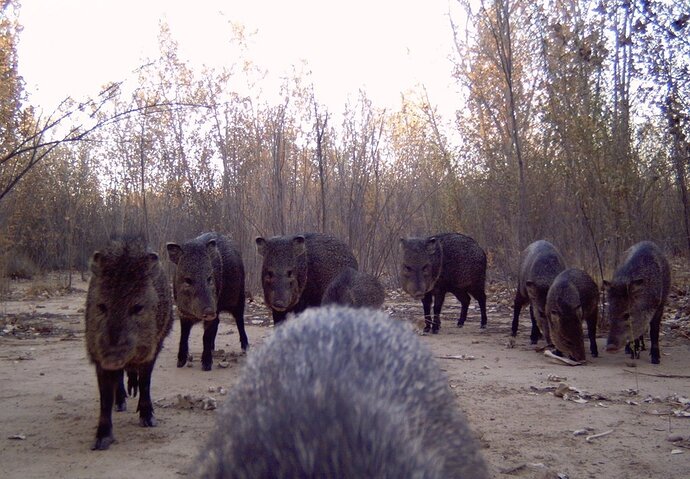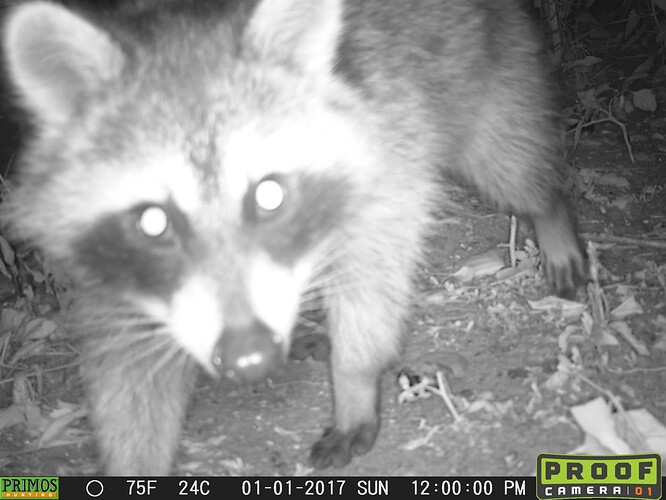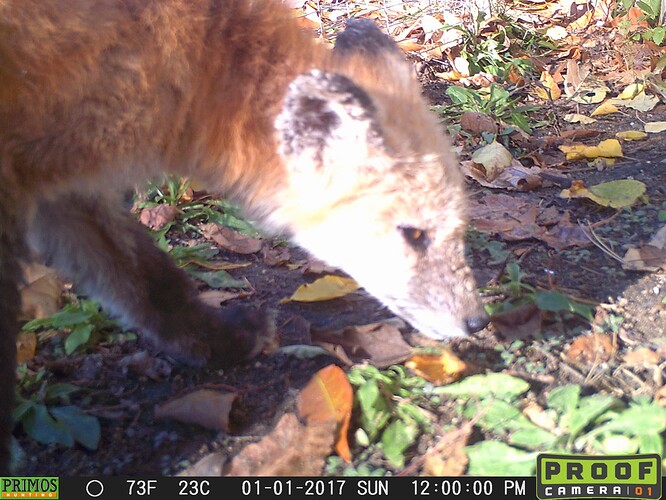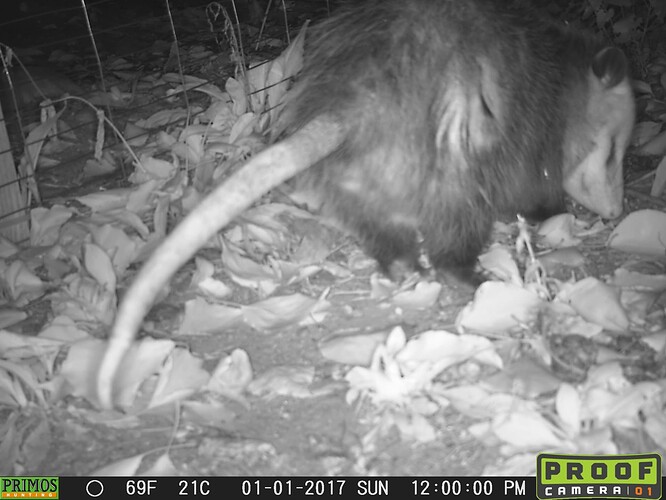Lately I have been placing out trail cameras and I seem to have an empty cam quite often, however when my camera is not out, I always seem to find deer, fox, and possum tracks, even the day after I remove my camera. The tracks are often right in front of where the camera would be. Do the animals sense the camera and stay away from it, and if so, how can I disguise the camera? Thank you in advance for you help!
Animals are often sensitive to disturbances and changes in their environment, especially if those come from something that’s obviously not part of the natural background. How that effects their behavior around trail cameras I’m not sure, but studies indicate that animals are more sensitive to trail camera noises and light than previously suspected.
- Meek, et al 2014 Camera Traps Can Be Heard and Seen by Animals
There is a convincing argument presented in this study to confirm that most mammals can hear the operational sounds generated by camera traps in both the infrasound and ultrasound ranges. Moreover, given the strong relationship between vision and hearing acuity [22], this study concludes that most mammals can see the infra-red illumination used in camera traps.
Some advice on setting up trail cameras to avoid disturbing wildlife.
I’d suggest setting up the camera and leaving it not running for a week or so, then putting in the batteries and running it. That would let wildlife get used to it being there without it making any disturbing noises or lights for them. When you then activate it it’ll be less of an intrusion for them.
I’d also suggest not moving it often. Each time acts as a disturbance. Keep it in whatever optimal location you’ve established and give it a long time there before moving it, or just make it a permanent watching post.
I’ve noticed raccoons standing up to get a better look at the camera, at least once an opossum came up to sniff the camera, and once a swamp rabbit came and “chinned” the camera (rubbed with scent gland under chin). I don’t have signs of any animals avoiding the camera. But maybe that’s because it’s in an area with humans milling about on the regular.
Have you tried a lure such as a scent post in front of camera? That can help get an animal to pause for a photo.
considering many autistic humans can hear a bunch of electrical sounds we aren’t supposed to be able to hear, i’d imagine animals which have better hearing than humans can hear more still
I advise a group of about 22 volunteers who run close to 45 trail cameras. They have found that certain animals show up much more on “no-glow” rather than “low-glow” cameras. Some animals, notably one bear, will also sometimes come over and investigate new cameras.
I assume it depends on the species, and the individual. Most animals would want to avoid weird new things, but others may be curious or want to challenge it.
Animals certainly seem to notice the various cameras that I have used. The LEDS that most of them use for infrared lighting have a red glow that even I can see, and the clicking of the mechanism that moves the infrared filter also alerts them.
Here’s an Australian Brushtail Possum that sat in front of my camera itching itself, then looks straight into the lens (slowed down so that you can see the action) (image too big so linked to instead) :
Suspicious possum
(Observation )
a couple years ago i had a trail cam that had the dark lens over the infra-red transmitter pecked out by a hairy woodpecker. i happened to have that camera among others deployed on roads to monitor for gray wolves. one day when i went to check the cameras i observed wolf tracks on the dirt road approaching that camera but was surprised when there were no photos obtained. so i went back and followed the tracks, and the wolf had left the road as it neared the camera that had the lens out, then came back to the road once past the camera’s location. so i quit using that camera.
I was working in Peru a long while ago and we set up some trail cameras at a culpa (aka colpa or collpa, a type of clay lick area) I’d found at the base of the adjacent ridge.
The tapirs and peccaries used it quite often and in many of the photos of the tapirs they were looking back over their shoulders directly at the camera.
Oh wow, i saw only a snip some where earlier, this is amazing. Any idea what happens / happened next
This is my favorite camera trap pic (of Collared Peccaries or Javelina). They didn’t seem troubled by the camera.
Sent a scout over to see off that new squatter?
I have used camera traps for years. There is huge variation by brand/type of camera. They can get used to all of them.
If you aren’t seeing anything, move the camera. Large mammals typically react after it snaps the picture. If the trigger speed (important to compare this feature) is fast enough, you still capture the animal. Slow trigger speed can equal animal spooking out of camera before it snaps.
Always be aware of human scent, keeping it as natural smelling as possible. This has rarely affected the camera, especially with small curious animals, but I suspect some deer in high human traffic areas are leery of anything smelling human.
I prefer infrared over flash. They don’t take as long for animals to get used to them (my opinion).
Another thing that improves capture rate is to place them over bait, or a good food source so they are occupied when they hear the noise, and walking slower or standing still.
Hope that helps.
Yes, trail cameras have the potential to frighten deer. Before you go out and sell the camera, take a hard look at that statement. The word “could” is crucial here. Trail cameras have the potential to frighten deer.
Be sure to check your local rules/ordinance/law. It is illegal to bait or feed deer where I live.
Or you could just scoop it up and fly away with it
Our experience using trail camera and viewing trail camera footage is to locate them where animals funnel: a trail between two bodies of water; a trail between two fences; a water source (bathing and/or drinking); etc.
Thank you for all of the suggestions everyone! Once the weather in my area warms up so that my trail camera won’t freeze anymore, I will definitely have to try out a few of these tips!



